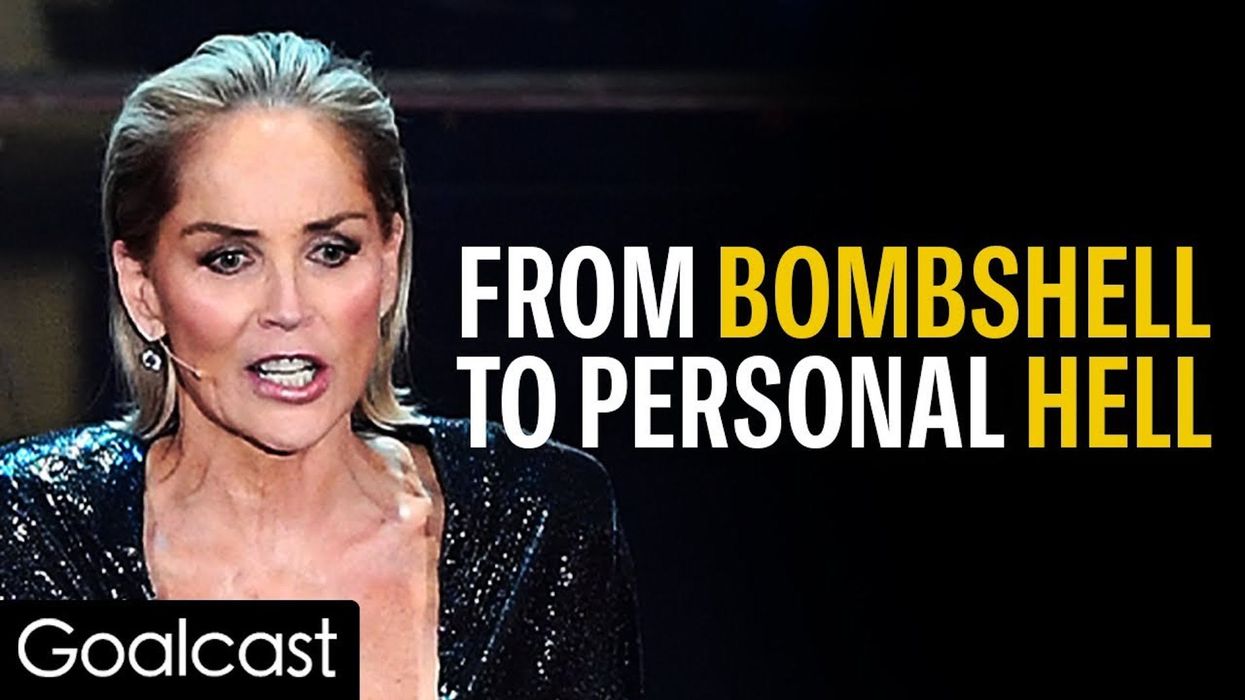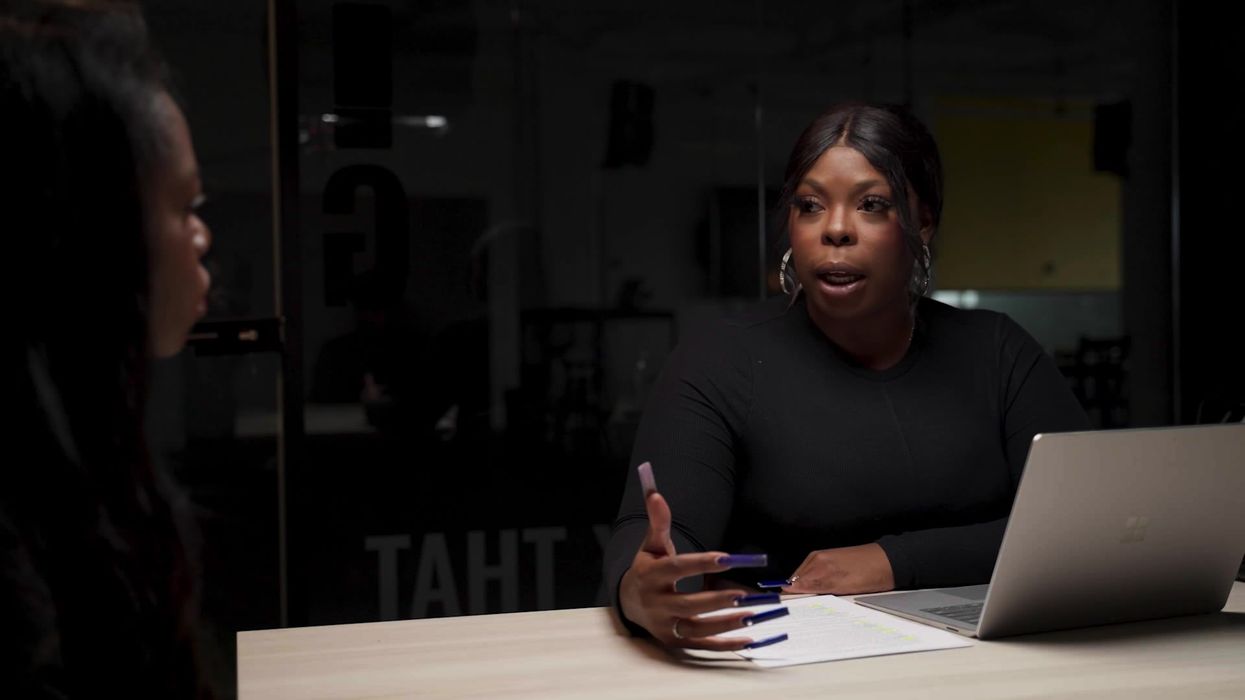
The Growth Mindset: 10 Steps To Move Past Limitations And Fulfill Your Potential
The growth mindset will set you on the right path toward achieving your dreams. Let's set you in that direction right now.
A growth mindset is an approach to life and learning that sets the groundwork to reach your full potential. From Buddhist wisdom to cutting-edge neuroscience, research and wisdom show nothing about the human experience is fixed. That includes your personality, your intelligence, and the way you respond to situations.
Much of the research into the growth mindset is related to formal education. But its application is wide-reaching, tapping into the very heart of the university of life, the day-to-day opportunities for learning and growth that are ever-present for those with the willingness and the courage to see.
This article will teach you how to develop the foundation, nourish the soil, and plant the seeds to set you in the direction to grow into your full potential. Whether you’re looking to become more self-aware, boost your productivity, catalyze your success, love more, expand your business, or develop your skills, a growth mindset is essential.

Carol Dweck: the growth mindset guru
It’s impossible to discuss the growth mindset without introducing Stanford psychologist Carol Dweck. Her pioneering book, Mindset: The New Psychology of Success, presented a profound understanding of it, pieced together by a huge body of scientific research and insights from two decades of work.
Carol Dweck’s research is simple and profound: mindset alone dictates a huge part of success. Regardless of talent or skill, the way you view your capability has a huge impact on results. Believe you’re unintelligent and useless, and you’re more likely to struggle. But start believing in your potential and capability, and the results follow.
Dweck’s research reveals that your fundamental approach to life can be changed. Because mindset is integral to so many aspects of the way you relate to the world, this has a profound ripple effect in all areas of life. The good news is, it’s possible to develop a growth mindset, with a little effort, and the desire to change.
What is a growth mindset?
A mindset is a basic attitude or philosophy of life. It’s a collection of thoughts and beliefs about who you are, what you’re capable of, and the world you live in. You can think of your mindset as the nucleus that beliefs and thoughts gravitate toward. For example, if you think you’re incapable of change, you’re likely to have thoughts such as “I can’t do this” or “I’ll never become the person I’d like to be.”
The growth mindset isn’t about one-off actions or quick fixes. It underpins every choice and every decision, including your whole approach to life. What’s most inspiring is the realization that your mindset can change. By changing your mindset, you fundamentally change who you are. In Dweck’s own words:
“When people...change to a growth mindset, they change from a judge-and-be-judged framework to a learn-and-help-learn framework. Their commitment is to growth, and growth takes plenty of time, effort, and mutual support.”
Growth mindset vs. fixed mindset
To better understand the growth mindset, let’s explore Dweck’s distinction and the contrast between its alternative: the fixed mindset. In her book, Dweck presents the main components of the two mindsets.
The fixed mindset views intelligence as static and leads to an attempt to look smart. Dweck discovered that this outlook views imperfections as “shameful,” and students who identify as talented often lie to cover up perceived shortcomings. This leads to behaviors such as:
- Avoiding challenges.
- Giving up easily.
- Seeing effort as fruitless.
- Ignoring useful negative feedback.
- Feeling threatened by others' success.
The growth mindset, on the other hand, views intelligence as malleable. This promotes a desire to learn, encouraging behaviors such as:
- Embracing challenges.
- Persisting in the face of setbacks.
- Seeing effort as the path to mastery.
- Learning from criticism.
- Finding lessons and inspiration in the success of others.
The results of these two mindsets differ greatly. Those with a fixed mindset are less likely to achieve their full potential, whilst the growth mindset leads to increasing levels of achievement, and a sense of free will — one of the biggest motivators to continue to take action. I’d encourage you to take a moment to reflect on where you see yourself. Do you lean more towards a fixed mindset? Or do you embrace the growth mindset?
Neuroplasticity: the neuroscience of the growth mindset

The concept of a growth mindset is mirrored in the physical structure of the brain. Years ago, it was believed that the brain was fixed. However, this view was transformed thanks to the emergence of neuroscience. Neuroplasticity, a term first used in 1948, explains how the brain constantly grows, changes, and adapts, based on new learning.
You may have heard of the phrase: “neurons that fire together, wire together.” Neurons communicate with electrochemical signals, through structures known as synapses. These neural “pathways” are stimulated during learning or the repetition of a task. Over time, these pathways strengthen in the brain, altering its structure.
The brain is ever-evolving and changing, from the moment you’re born to the moment you die. This acts as a powerful metaphor for the concept of growth — nothing about you is fixed. For example, experience-dependent neuroplasticity explains the brain's capacity to “change in response to experience, repeated stimuli, environmental cues, and learning.”
Interestingly, one study discovered a neuroscientific interplay between the regions of the brain involved in growth mindset and intrinsic motivation behaviors. “Growth mindset relates to brain processes, and brain processes relate to motivated behaviors,” author Betsy Ng writes. “With the inculcation of growth mindset, individuals will perceive the intrinsic value of a given task and self-regulate their behaviors to perform the task.”
Be the person you want to be: the importance of a growth mindset
Your personality isn't permanent. The most successful people in the world base their identity and internal narrative on their future, not their past.
Benjamin Hardy
Carol Dweck argues that a growth mindset “can determine whether you become the person you want to be and whether you accomplish the things you value.” That’s a pretty big deal, backed up by a wealth of research. I personally find it to be an important foundation of all types of self-development.
Although Dweck’s work explores growth mindsets through the lens of success, she’s careful to point out that by approaching life as an opportunity to learn, there is no such thing as failure. This kind of mindset views all experiences as opportunities to learn. This is one of the most empowering attitudes to life.
A word of caution: growth mindsets doesn’t mean overnight transformation. Look for gradual improvement over time, and be kind to yourself throughout the process. The nature of human growth is very much cyclical, so don’t be downhearted by the times where it feels things aren't going your way.
There is a paradox of growth, in that, to maximize your potential, you have to accept where you’re at, right now, and build from there. Trying to run away from who you are, or aiming to develop in order to become more worthy of lovable, actually restricts growth. Developing the right mindset reduces perfectionism, it doesn’t enhance it.
The growth mindset and relationships

Beyond the realm of personal development, the growth mindset has a significant effect on relationships. I’ve covered a lot of topics around healthy relating, and on some level, the growth mindset is at the core of them. “Just as there are no great achievements without setbacks, there are no great relationships without conflicts and problems along the way,” Dweck notes.
A fixed mindset causes people to look for “instant, perfect, and perpetual compatibility.” When effort is viewed as fruitless, the belief is that relationships don’t take work. The avoidance of challenges and giving up easily means people are less likely to work through these conflicts to develop a deeper, lasting love. Not to mention the ability to receive negative feedback from a partner is crucial to cultivating greater intimacy.
A growth mindset doesn’t blame or seek perfection. At the core is the belief that both partners can grow and change. With a willingness for two people to learn about each other and build greater trust, a conscious relationship is able to flourish. It becomes a partnership of maximized potential, two people independently growing, supporting each other, and facing challenges as they arise.
Be vigilant of the false growth mindset
Humans are skilled at self-deception. The ego conjures all types of stories and excuses that limit your growth. What happens when the concept of the growth mindset is intellectually understood, but not embodied or practiced? Or when the addiction to constant growth becomes a hindrance? Such is its prevalence, Dweck released an updated version of her book to address the false growth mindset.
When developing a mindset focused on growth, the false growth mindset is something to remain vigilant of. “False growth mindset is saying you have a growth mindset when you don't really have it or you don’t really understand [what it is],” Dweck told the Atlantic. “It’s also false in the sense that nobody has a growth mindset in everything all the time.”
Remember how everything is always evolving, changing, and nothing is fixed? Well, that applies to the growth mindset itself. Different situations can cause us to stagnate, or “trigger” a fixed mindset. That’s why a genuine growth mindset is one of always being honest, always assessing and evaluating, and making adjustments when necessary.
How to develop it: 10 Actionable steps to thrive

So, now that you know all about the concept, the next step is to take this knowledge and turn it into something tangible and practical. Below are 10 actionable steps to kick-start your exploration.
1. Accept yourself as you are
Carl Rogers, a pioneer of positive psychology, wrote: “The curious paradox is that when I accept myself just as I am, then I can change.” With all the discussion of growth and potential, there’s a risk of falling into a trap of self-rejection. Embracing the paradox of acceptance leads to self-development that is fuelled by inspiration, not by the desire to move away from who you are.
Shortcomings or unhelpful tendencies or coping mechanisms have to be seen and accepted before they change. For example, if you wish to become a more loving partner, you have to be transparent with what’s holding you back — perhaps you’re troubled by jealousy, or resentment, or insecurity in the face of your partner’s success.
Part of the journey, then, is knowing yourself. In truly knowing yourself, you accept yourself as you are. Then, once you’ve seen the areas you’d like to improve, you can start moving towards who you’d like to become, rather than reinforce unhelpful behaviors. But it always begins with accepting yourself as you are.
2. Focus on the lifelong dedication to learning

A growth mindset is realistic. This isn’t positive thinking or quick fixes. It’s a solid, scientifically proven, psychological method. There aren’t false promises that anyone can become a genius or as productive as Elon Musk. But the right mindset comes with the understanding that the human potential is unknowable, and, as Dweck says, “it’s impossible to foresee what can be accomplished with years of passion, toil, and training.”
Part of this approach is to focus on the process, not the outcome. While visioning your future self is a step on this list, it’s not something to become fixated on or blinded by. Use it as an incentive. As the Yiddish proverb states: “Man plans, God laughs.”
Ultimately, with infinite potentials and life’s mysterious nature, the specifics are unknowable. But focus on the learning, and you’ll find yourself in places you’d never imagined, becoming a person you never thought you’d be, whilst enjoying every step of the way.
3. Let go of perfectionism
Perfectionism is not the same thing as striving to be our best. Perfectionism is not about healthy achievement and growth; it's a shield.
Brene Brown
Perfectionism is the glue keeping a fixed mindset in place. While it may appear to be self-serving, as Brene Brown notes, it is a barrier to growth. To develop a growth mindset means embracing imperfection and flaws, assessing areas that need work, not from a place of judgment, but from a place of equanimity.
Letting go of perfectionism isn’t easy, especially if it’s a lifelong habit. I’ve personally had to do a lot of work around perfectionism. Accepting you’re not perfect, and that there are always things to learn, things to change, areas to improve, is incredibly relieving. How would you feel if you could fully accept your imperfections, whilst knowing it's within your power to change?
4. Practice radical self-honesty
Understanding that self-deceit keeps a fixed mindset in place means that it’s crucial to practice radical self-honesty. In what areas are you not facing up to truths? Where are you lying to yourself or finding excuses for all the reasons you can’t? This is closely linked to perfectionism, as typically, holding onto the facade of perfection leads to inauthenticity.
Is someone who views themselves as naturally gifted and intelligent, looking to prove this to the world, likely to ask for help? Or admit to mistakes? To make the most of the paradox of growth you have to self-assess from a place of honesty.
A lot of people with high intelligence develop the belief they don’t have to put in so much effort. I had this attitude all through high school and university. I was “lucky” in that I didn’t have to try to get good grades. Eventually, I realized this was an excuse I told myself to make me feel better about not trying. I had developed a sense of entitlement.
Only through self-honesty could I accept that this was holding me back in life. Then I was able to begin to explore what genuinely interested me. I didn’t have anything to prove but started to look at the ways of maximizing the intelligence I had.
5. Be aware of the end of history illusion
Students of a mindset focused on growth know the importance of believing in your own capability. That means believing in an image of yourself that is beyond where you’re currently at, or what level your talents are.
A helpful hint in this direction is the psychological concept of the end of history illusion. This is a fallacy related to growth: most people can acknowledge how much they’ve grown when looking into the past, yet drastically underestimate their potential for future growth.
Why is this important? Being aware of this fallacy allows you to overcome it when visioning your future self. Think of the “you” as a child, and then from five years ago — what beliefs and strategies you pursued, your attitude, your skills and abilities. When looking at your future self, be bold in the amount of growth and change you desire. It’s likely your initial approach will underestimate what’s possible.
6. Picture your future self
Keeping the end of history illusion in mind, one way to instill a growth mindset is to know what you’re growing towards. The smallest plant finds the will to reach through the soil, to move towards the sun, to find its nourishment. What will you move towards? What vision inspires you?
Use the power of your imagination to build the image of your future self. Create the narrative. What feels exciting? What feels inspiring? What steps do you have to take to move towards this version of you in six months’ time, a year, five years, 10 years, or more?
7. Focus on development, not approval
Researchers like Dweck make a distinction between the need for praise or validation, and the desire to constantly develop. When seeking validation for how intelligent or gifted or capable you are, the likelihood of perfectionism and stress increases. Instead, no matter what you’re starting point is (you might struggle as a student or have natural talents in some areas), let go of the need for approval.
Instead, utilize the skills and capabilities you have, No one on this planet is beyond development. A great demonstration of this is elite performers who put in more effort than their counterparts — think of athletes such as Michael Jordan and Cristiano Ronaldo. Not only are they gifted, they also put in extra work.
8. Transform your approach to failure and rejection
As mentioned, one of the benefits of developing a growth mindset is transforming your approach to failure. With a growth mindset, there’s no such thing. But this is an attitude that might require cultivation, especially if you’re a high-achiever, or used to viewing the world in terms of success and failure.
A common misbelief with this step is that people feel it might lead to embracing failure, and therefore reduce motivation. This isn’t the case; failure or rejection is ultimately outside of personal control. You might write the best manuscript the world has ever seen, yet have it rejected by publisher after publisher.
By focusing on process over outcome, you’re more likely to be even more productive, and paradoxically, more successful! This is because your actions are inspired by the desire to grow and learn, not the results. A growth mindset focuses vigorously on what you can improve or control, whilst allowing the rest to fall into place.
9. Push yourself outside of your comfort zone
To grow and reach your potential, it’s crucial to take on challenges that push you outside of your comfort zone. A comfort zone feels safe, but moving outside of your comfort zone builds momentum, expands what you feel capable of, and reinforces your ability to grow. Over time, you feel confident in taking on even bigger challenges.
To quote Brene Brown again, “you can choose courage or you can choose comfort. You cannot have both.” Stepping outside of your comfort zone, into what is referred to as the “growth zone,” isn’t comfortable! But humans aren’t wired for comfort. A healthy level of stress is required to grow. This doesn’t mean diving in the deep end or over-exerting yourself, but instead, finds a healthy balance of strategies. What areas of life are you staying in your comfort zone? Where could you push yourself more?
10. Develop the attitude of “not yet”

In her TED talk, Dweck describes “two ways to think about a problem that’s slightly too hard for you to solve.” Although her approach leans towards the way students are educated in schools by their teachers, encouraging kids to view intelligence and problem-solving as a work in progress (not a failure) applies to all challenges that naturally arise on the journey of self-development.
Anytime you find setbacks or feel you’re not where you’d like to be, or if your self-critic begins to weave narratives around capability, take a moment to pause, reframe, and add “not yet” at the end of the sentence. Remind yourself nothing is fixed, take each step at a time, and keep growing.
In conclusion: a glossary of growth
In the self-development world, it sometimes feels like unless you’re constantly improving and growing, you’re somehow not enough. Dweck’s growth mindset offers a framework that sets the foundation of growth without falling into the trap of perfectionism or comparison — or the “false growth mindset.”
Having a vision of who you’d like to become doesn’t mean rejecting who you are, right now, in this very moment. Remember, who you are is a product of a past vision. So make sure you maintain self-compassion and self-acceptance as you continue to grow towards the sun of your potential.
As Stephen Covey says, “Be patient with yourself. Self-growth is tender; it’s holy ground. There’s no greater investment.” View the growth mindset as a long-term investment, not a short-term fix. Begin applying the steps outlined above, and over time, the results will begin to show.
































